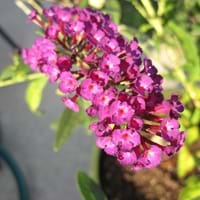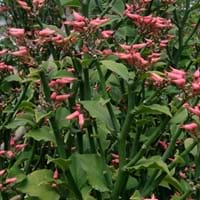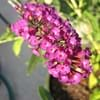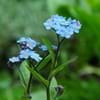Life Span
Perennial
Perennial
Type
Flowering Plants, Shrubs
Shrub
Origin
Africa, America, Asia
Madagascar
Types
Lockinch, Petite Indigo, White Profusion
Euphorbia tithymaloides tithymaloides, Euphorbia tithymaloides angustifolia
Habitat
Along Railroads, River side, Roadsides
subtropical regions, Tropical regions
USDA Hardiness Zone
5-10
9-13
AHS Heat Zone
9-2
Not Available
Sunset Zone
H1, 2a, 2b, 3a, 3b, 4, 5, 6, 7, 8, 9, 10, 11, 12, 13, 14, 15, 16, 17, 18, 19, 20, 21, 22, 23, 24
H2, 13, 23, 24
Habit
Arching/Fountain-shaped
Upright/Erect
Flower Color
Blue, Pink, Purple, Red, White
Purple, Orange, Pink, Magenta
Flower Color Modifier
Not Available
Not Available
Fruit Color
Not Available
Not Available
Leaf Color in Spring
Gray Green
Green, Gray Green, Burgundy
Leaf Color in Summer
Gray Green, Light Green
Green, Gray Green
Leaf Color in Fall
Gray Green, Light Green, Yellow green
Green, Gray Green
Leaf Color in Winter
Not Available
Green, Gray Green
Leaf Shape
Egg-shaped
Ovate
Plant Season
Fall, Spring, Summer, Winter
Spring, Summer, Fall, Winter
Sunlight
Full Sun, Part sun, Partial shade
Full Sun, Partial Sun
Type of Soil
Loamy, Sandy, Well drained
Loam, Sand
The pH of Soil
Neutral, Slightly Acidic, Slightly Alkaline
Neutral, Alkaline
Soil Drainage
Well drained
Well drained
Bloom Time
Spring
Late Spring, Early Summer, Summer, Indeterminate
Tolerances
Drought, Pollution, Salt, Soil Compaction
Drought
Where to Plant?
Ground, Pot
Container, Ground, Pot
How to Plant?
Seedlings, Stem Planting, Transplanting
Seedlings, Softwood cuttings
Plant Maintenance
Medium
Medium
Watering Requirements
Form a Soil ring to water efficiently, Water Deeply, Water twice a day in the initial period
Average Water Needs, Do Not over Water
In Summer
Lots of watering
Lots of watering
In Spring
Moderate
Moderate
In Winter
Average Water
Average Water
Soil pH
Neutral, Slightly Acidic, Slightly Alkaline
Neutral, Alkaline
Soil Type
Loamy, Sandy, Well drained
Loam, Sand
Soil Drainage Capacity
Well drained
Well drained
Sun Exposure
Full Sun, Part sun, Partial shade
Full Sun, Partial Sun
Pruning
Cut or pinch the stems, Prune for shortening long shoots, Prune if you want to improve plant shape, Prune ocassionally, Remove damaged leaves, Remove dead or diseased plant parts, Remove deadheads, Remove shoots
Remove damaged leaves, Remove dead branches, Remove dead leaves
Fertilizers
All-Purpose Liquid Fertilizer
All-Purpose Liquid Fertilizer
Pests and Diseases
Downy mildew, Leaf spot, Spider mites
Red blotch
Plant Tolerance
Drought
Drought
Flower Petal Number
Single
Single
Foliage Texture
Medium
Bold
Foliage Sheen
Matte
Matte
Invasive
Sometimes
Sometimes
Attracts
Butterflies, Hummingbirds
Hummingbirds
Allergy
Vomiting
Carcinogenic, Diarrhea, Skin irritation, Toxic
Aesthetic Uses
Showy Purposes
Cottage Garden, Showy Purposes
Beauty Benefits
Not Available
Skin Problems
Environmental Uses
Air purification
Air purification
Medicinal Uses
Not Available
Asthma, Emetic, Inflammation, Intestinal worms
Part of Plant Used
Flowers, Leaves
Leaves, Root
Other Uses
Showy Purposes, Used as Ornamental plant
Tea-like beverage can be brewed, Used as Ornamental plant, Used for its medicinal properties
Used As Indoor Plant
No
No
Used As Outdoor Plant
Yes
Yes
Garden Design
Edging, Feature Plant, Foundation
Container, Houseplant, Mixed Border, Rock Garden, Wall, Tropical
Botanical Name
Buddleia davidii
Euphorbia tithymaloides
Common Name
Butterfly Bush, Summer Lilac, Butterflybush
Devil's Backbone
In Hindi
Butterfly Bush
Devil's Backbone
In German
Schmetterlingsstrauch
Devil's Backbone
In French
buisson de papillon
Backbone du Diable
In Spanish
arbusto de las mariposas
El espinazo del diablo
In Greek
Butterfly Μπους
Devil's Backbone
In Portuguese
arbusto de borboleta
Espinha do Diabo
In Polish
Butterfly Bush
Kręgosłup diabła
In Latin
papilio rubo
Narum diaboli
Phylum
Spermatophyta
Magnoliophyta
Class
Dicotyledonae
Magnoliopsida
Order
Lamiales
Malpighiales
Family
Scrophulariaceae
Crassulaceae
Clade
Angiosperms, Asterids, Eudicots
Angiosperms, Eudicots, Rosids
Tribe
Not Available
Euphorbieae
Subfamily
Not Available
Euphorbioideae
Importance of Butterfly Bush and Devils Backbone
Want to have the most appropriate plant for your garden? You might want to know the importance of Butterfly Bush and Devils Backbone. Basically, these two plants vary in many aspects. Compare Butterfly Bush and Devils Backbone as they differ in many characteristics such as their life, care, benefits, facts, etc. Every gardener must at least have the slightest clue about the plants he wants to plant in his garden. Compare their benefits, which differ in many ways like facts and uses. The medicinal use of Butterfly Bush is Not Available whereas of Devils Backbone is Asthma, Emetic, Inflammation and Intestinal worms. Butterfly Bush has beauty benefits as follows: Not Available while Devils Backbone has beauty benefits as follows: Not Available.
Compare Facts of Butterfly Bush vs Devils Backbone
How to choose the best garden plant for your garden depending upon its facts? Here garden plant comparison will help you to solve this query. Compare the facts of Butterfly Bush vs Devils Backbone and know which one to choose. As garden plants have benefits and other uses, allergy is also a major drawback of plants for some people. Allergic reactions of Butterfly Bush are Vomiting whereas of Devils Backbone have Carcinogenic, Diarrhea, Skin irritation and Toxic respectively. Having a fruit bearing plant in your garden can be a plus point of your garden. Butterfly Bush has no showy fruits and Devils Backbone has no showy fruits. Also Butterfly Bush is flowering and Devils Backbone is not flowering . You can compare Butterfly Bush and Devils Backbone facts and facts of other plants too.





